Ladder from a profile pipe: how to make an easy and strong
After the completion of the construction of a residential house on a suburban land plot, a number of different building materials remain at the disposal of the zealous owner, which can be used to create various devices that facilitate work in the garden and in the garden. For example, a ladder from a profile pipe: with your own hands the assembled construction will reliably serve you for many years. And its cost will be much lower than the price of a similar product in the store.
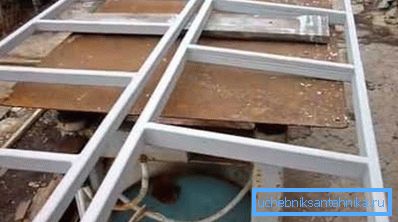
Independent production of a ladder from a metal profile
Choice of option
The need for a strong and easy stepladder in a country site is unlikely anyone will dispute. What can I say, it does not hurt in a city apartment with high ceilings.
Most often, speaking of stairs, wood comes to mind as the most common material for their manufacture.
But the tree has many different disadvantages:
- requires special storage conditions;
- easily absorbs moisture;
- cracks up quickly;
- serves as a haven for various bugs and bacteria.
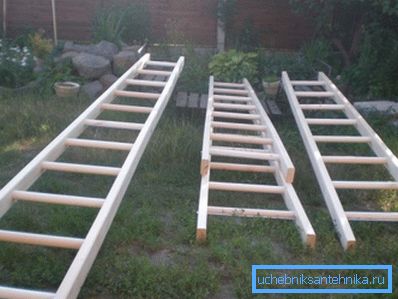
If you weld the frame of a ladder from a profile pipe, then the only thing to be afraid of is corrosion. Ordinary paint will help protect the metal from it.
Having decided on the material, you should proceed to the choice of the optimal design. It is best to do a step ladder that can be installed anywhere, and not just near any support.
There are three types of these products:
- A-shaped. This is a classic design, known for a very long time. It consists of two classic ladders connected at the top with hinges.
- Universal. A feature of these stairs is their ability to transform from the A-shaped position to the straight. Some designs may take the form of construction goats, representing a kind of broad letter "P".
- Transformers. These stairs are more used in apartments. Folding, they take the form of various pieces of furniture (tables, chairs, and so on), organically fitting into the interior of the room.
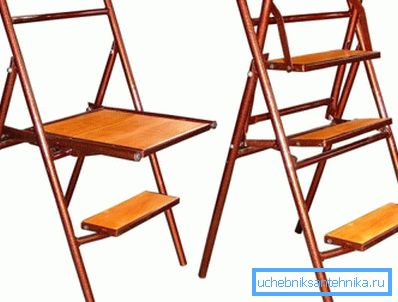
Tip! For self-manufacturing is most suitable A-shaped stepladder. Other constructions will require extensive plumbing skills and expensive materials (for example, hinge assemblies). Sometimes it will be cheaper to buy a finished ladder than to do it yourself.
Materials and methods of connection
The best material for the manufacture of step-ladder will be a metal profile tube of rectangular cross section. Billets can be steel or aluminum. The latter option is preferable, since the finished product will not be subject to corrosion. (See also the article How to bend a profile pipe: features.)
In some cases it is possible to use several materials: racks are made of aluminum, and transverse elements are made of steel. The calculation of the stairs from the profile pipe shows that this design will be very light, but have sufficient strength. The only drawback is that only bolts can be used for the connection.
In other cases, it is more appropriate to use a welding joint.
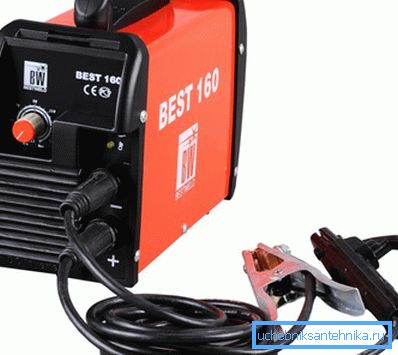
Assembly process
So, how to weld a ladder from a profile pipe?
The whole process is quite simple and consists of several stages:
- Joint support. Four shaped tubes of suitable length and section are used as ladder legs. Make sure that the length of all blanks is the same. After that, one of the ends of each part (departing 10-20 cm from the edge) should be made through holes. Then the blanks are twisted in pairs using long bolts with a short thread at the end. Thus, it turns out a hinged connection, which allows folding and unfolding the stairs.
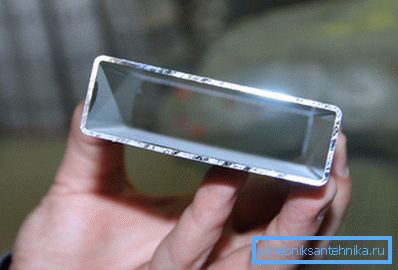
- Laying the support on the ground, you should make a mark that will serve as a guide for the installation of transverse strips-steps. As the material for the latter, you can use the same profile pipe, angle or fittings. Do not forget that the steps must be welded to the supports at an angle of 90 degrees. For control, you can use a metal square.
- We connect to the network and set up a welding machine for operation. First, it is recommended to weld the first and the last crossbar, and then mount the rest on the previously marked marks.
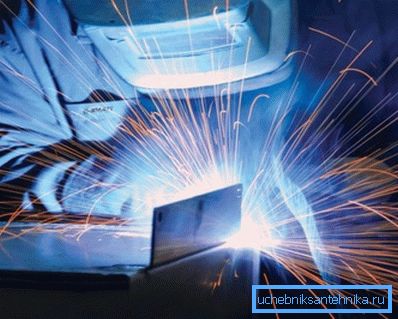
If the blanks for the steps are too long, then the part that stands for the supports can be cut off later with the help of a grinder or a gas burner.
Tip! Initially, it is advisable to weld the steps in black with spot welding. And only after installation of the whole structure and control of its geometrical parameters can all the seams be carefully processed.
- The second two pillars will not have transverse treads.. However, it is necessary to weld several transverse elements in order to exclude the movement of these parts separately. Attach them to the top, middle and bottom. You can also use an additional, diagonal part (but this is no longer necessary).
- Steel cable is fastened between the ladder sections.. Its length should be such that the legs are placed at the desired length and ensure the stability of the structure.

- If you plan to use the ladder only indoors, then you can complete the design.. But the supports of such a ladder will easily fall into the soft soil that prevails on a country site. To avoid this, it is enough to take two more pieces of metal shaped tube, the length of which is 30-40 centimeters longer than the steps, and weld them in the lower part of the stairs, making the inner and outer legs.
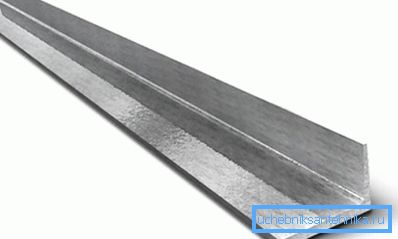
Tip! When using the ladder for gardening, soil and sand will be packed into the holes in the profile pipe. To avoid this, you can use a metal corner for the lowest bar. This way you save yourself from having to clean up the dirt and prevent premature corrosion of the metal of the pipe.
- Do not forget to paint the stairs. This gives it an attractive appearance and protects the structure from the effects of adverse environmental factors. (See also the article Garage of the profile pipe: features.)
Conclusion
The instructions given above will help you without any trouble to construct a ladder from a metal profile, which will be your faithful assistant in the annual struggle for the harvest.
For more information about the manufacture of various useful crafts from the remnants of building materials can be found in the video in this article.